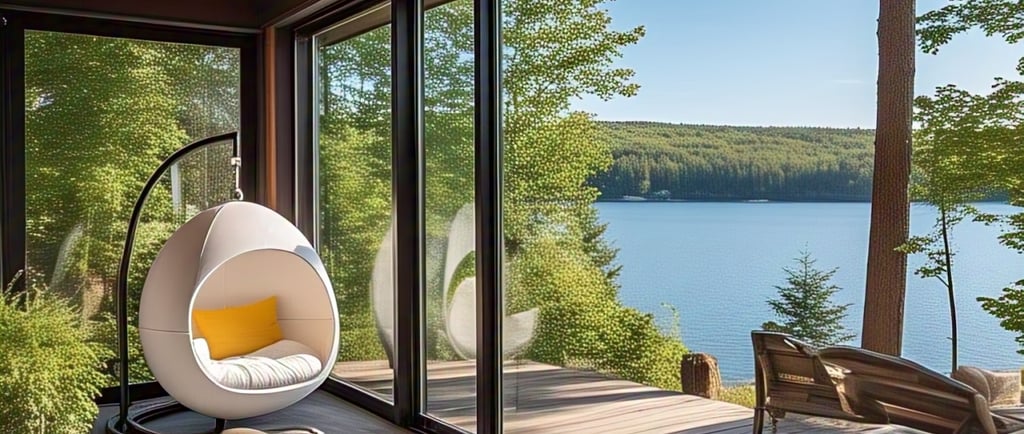Cozy Cabin Retreats: Finding Peace in the Wilderness with a Flexible Itinerary
Feeling overwhelmed? Discover how a cozy cabin retreat in nature can help ease anxiety. Learn to create a buffer-friendly flexible itinerary that offers flexibility and calm. Incorporate tools like a weighted blanket and calming tea to find your peace in the wilderness.
ANXIETY
A.Alex, MS
6/25/20252 min read


Cozy Cabin Retreats: Finding Peace in Wilderness
Ever felt like life is pulling you in a hundred directions? Like your schedule is packed tighter than a suitcase before a trip? Sometimes, what we need isn’t more plans—it's space. Space to breathe, relax, and reconnect. That’s where a cozy cabin retreat in the wilderness can work wonders, especially if anxiety is making everything feel overwhelming.
Finding peace in nature can help you reset. Imagine settling into a quiet cabin surrounded by trees, with only the sounds of rustling leaves and distant birds. The fresh air, open sky, and gentle silence create a perfect space for calming. But even in a retreat, flexibility is key.
Create a buffer-friendly itinerary—that’s your secret weapon. Instead of rushing from one activity to the next, plan for slow, gentle mornings, with plenty of buffer time. This isn’t about overloading your day; it’s about giving yourself gentle breathing room.
Why it helps
Flexibility reduces the pressure and expectations that often make anxiety worse. When your schedule isn’t packed with back-to-back plans, your nervous system feels more in control. It’s like giving your mind a big, forgiving cushion to relax into.
Buffer zones—fruitful spaces between activities—are your new best friends. If you’re hiking and need a moment, take it. If the weather turns, switch plans easily. This freedom to adapt reduces anticipatory anxiety—the worry about what might go wrong or whether you’ll get overwhelmed.
How to build your itinerary
Start with your main goal: reconnecting with nature and finding peace. Then, break your day into gentle blocks. Morning: coffee on the porch, watching the sunrise. Mid-morning: a slow walk or journaling, with plenty of time for rest. Afternoon: a light hike, or simply reading by the fire.
Include plenty of buffer time—maybe an hour or two—so nothing feels rushed. Remember, your goal isn’t to tick every activity off a list, but to nurture your wellbeing.
Story time: I had a friend who was anxious about traveling to a remote cabin. She was worried she’d run out of things to do or feel isolated. Together, we built a flexible plan—lots of open time, with options to sit with her tea, read a book, or take a nap. She ended up feeling more relaxed than she ever imagined, simply because she gave herself space.
Feeling small and safe in nature
In the wilderness, you can breathe deeply and feel connected even when worries threaten to drown you. The quiet rustling leaves remind us that life moves slowly and that peace doesn’t need to be chased—it can be found in the simple act of being present.
A cozy cabin retreat isn’t just a getaway; it’s a gentle reminder that sometimes, doing less is doing everything. When anxiety tries to take hold, remember, your buffer-friendly plan allows space for calm to settle in.
Final touches:
Bring along comforting products to enhance your retreat. Wrap yourself in a weighted blanket—it’s like a hug from the universe, grounding you when worries become overwhelming. Sip on calming tea—lavender, chamomile, or herbal blends—that soothe your nervous system and invite quiet.
Feeling small in the wilderness isn’t a bad thing. It’s your chance to reconnect with your roots, to find peace in the simple, slow moments, and to nourish your soul away from the chaos. With a flexible, buffer-friendly itinerary, you’ll discover that sometimes, the greatest journey is inward.
Happy comforting.
Yours,
Alexandraerate
Copy